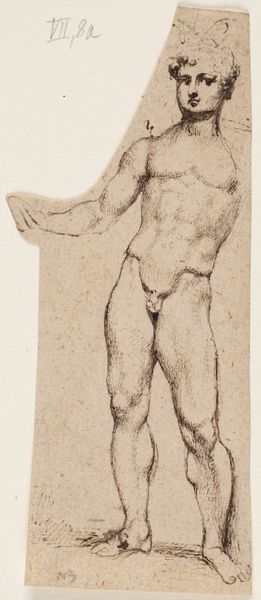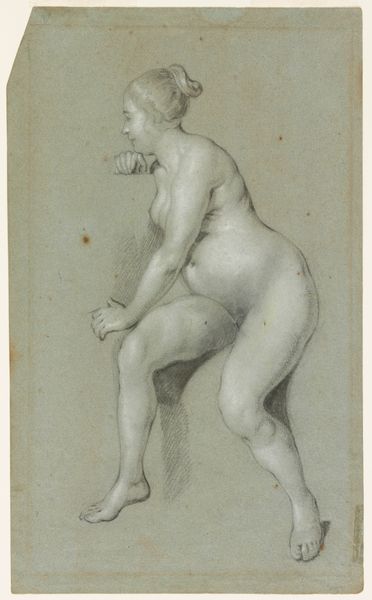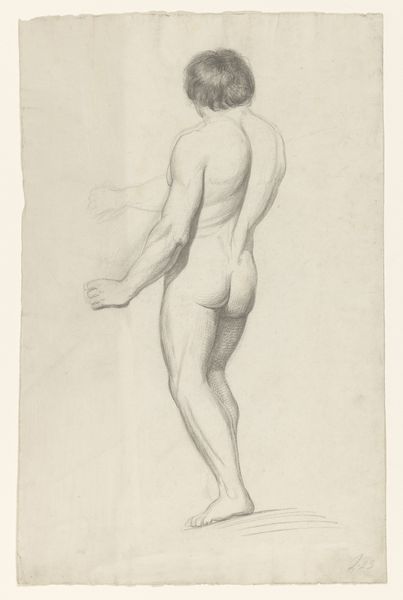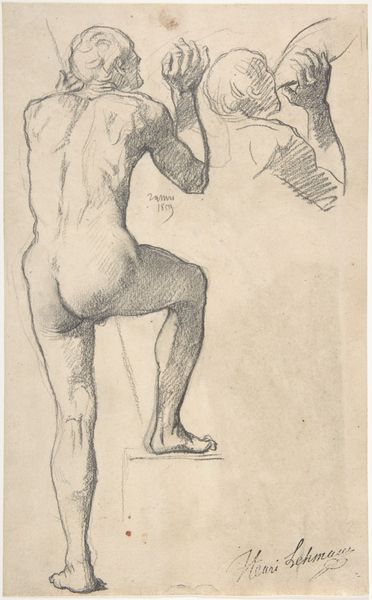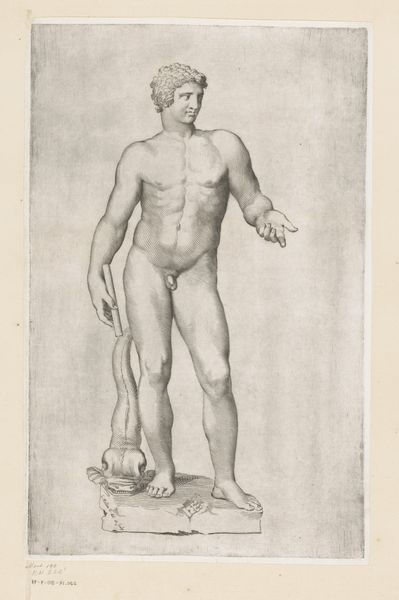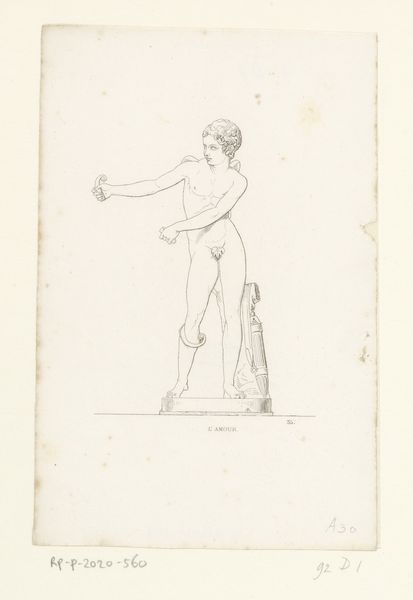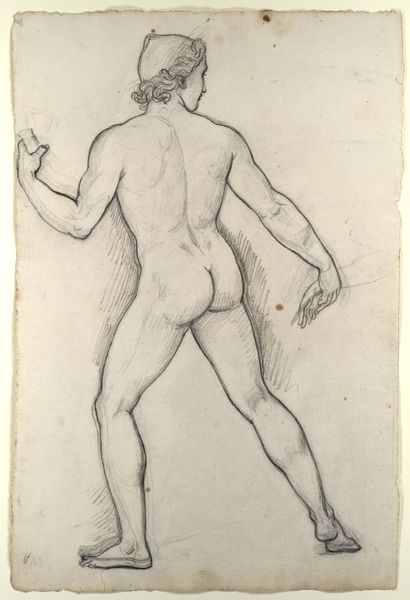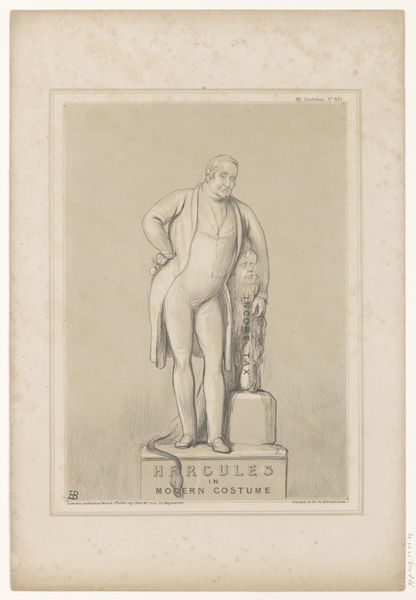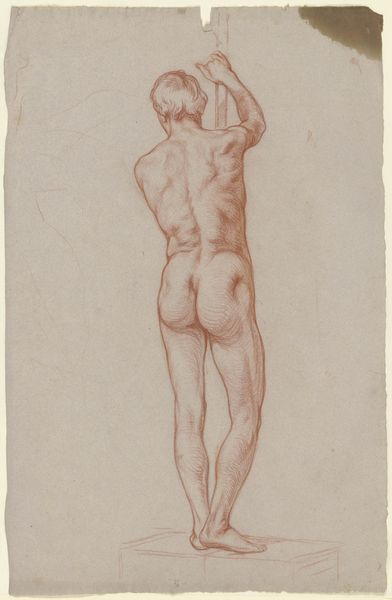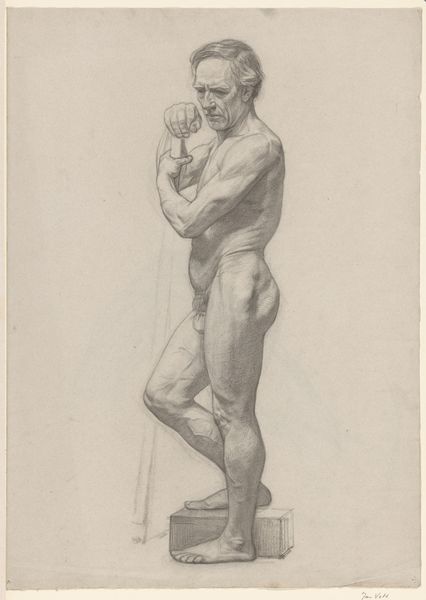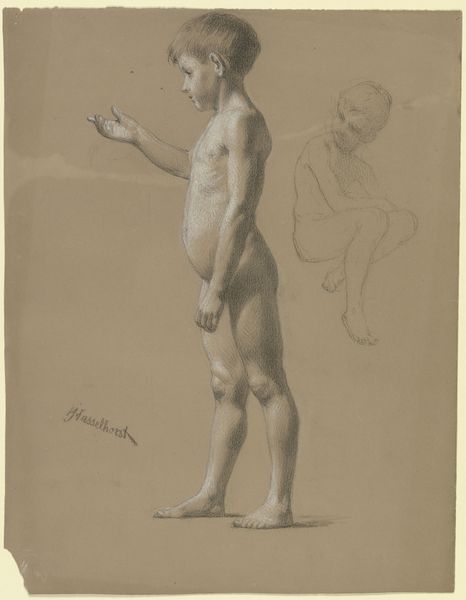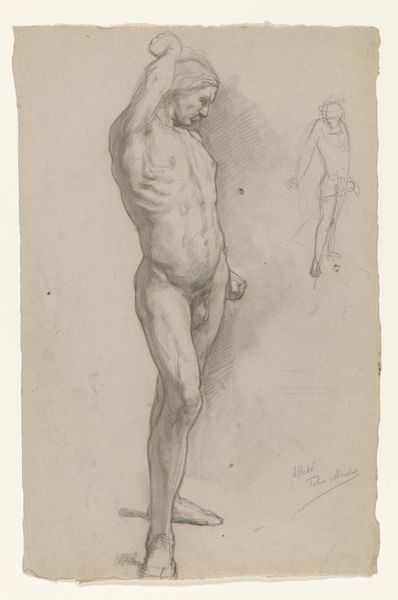
drawing, pencil
#
drawing
#
imaginative character sketch
#
light pencil work
#
pencil sketch
#
figuration
#
personal sketchbook
#
idea generation sketch
#
sketchwork
#
pencil
#
sketchbook drawing
#
pencil work
#
storyboard and sketchbook work
#
nude
#
sketchbook art
#
realism
Dimensions: height 113 mm, width 65 mm
Copyright: Rijks Museum: Open Domain
Curator: This is August Allebé’s “Naakte jongen met kan in de hand, op de rug gezien,” created sometime between 1848 and 1927. It resides here with us at the Rijksmuseum. Editor: Immediately striking is the sketch's vulnerable and unadorned quality. It feels very raw and personal. Curator: The loose pencilwork certainly contributes to that impression. As a drawing, and what appears to be a preparatory study at that, the labor is visible, and it exposes the artist's hand in a direct, unfiltered way. I find myself wondering, what sort of studio conditions did Allebé work within to produce a sketch like this? Were child models readily accessible? Editor: Speaking to its pure aesthetic qualities, notice the play of light and shadow despite the minimalist strokes. The hatching defines form beautifully and suggests depth despite the essentially two-dimensional surface. Observe the tension in the outstretched arm. Curator: I wonder about the accessibility of drawing materials at the time and what specific type of pencil would have achieved such delicate lines. This affects our understanding of the skill required, but it's important to consider also the market forces that shape what artistic materials were accessible to whom. Editor: True, yet one can appreciate the formal elements irrespective of its making, no? See how the curve of the jug echoes the line of the spine, creating a subtle harmony in composition. Curator: Such echoes are indeed deliberate and constructed, but this is equally driven by societal and artistic conventions. After all, the artist is equally a consumer of these ideas, which subsequently manifests into material form through his tools, process, and labor. Editor: Fair point. The work presents a figure imbued with classical sensibility through a fleeting, informal moment. I found something of timeless and placeless within its form. Curator: I agree. Considering Allebé's time, the piece becomes something of a cultural object: a visual testament to an era grappling with shifts in artistic patronage, evolving understandings of childhood and new visual representations, even mass-produced and commodified. Editor: Yes, considering these points definitely provides new levels to an appreciation of the piece.
Comments
No comments
Be the first to comment and join the conversation on the ultimate creative platform.
